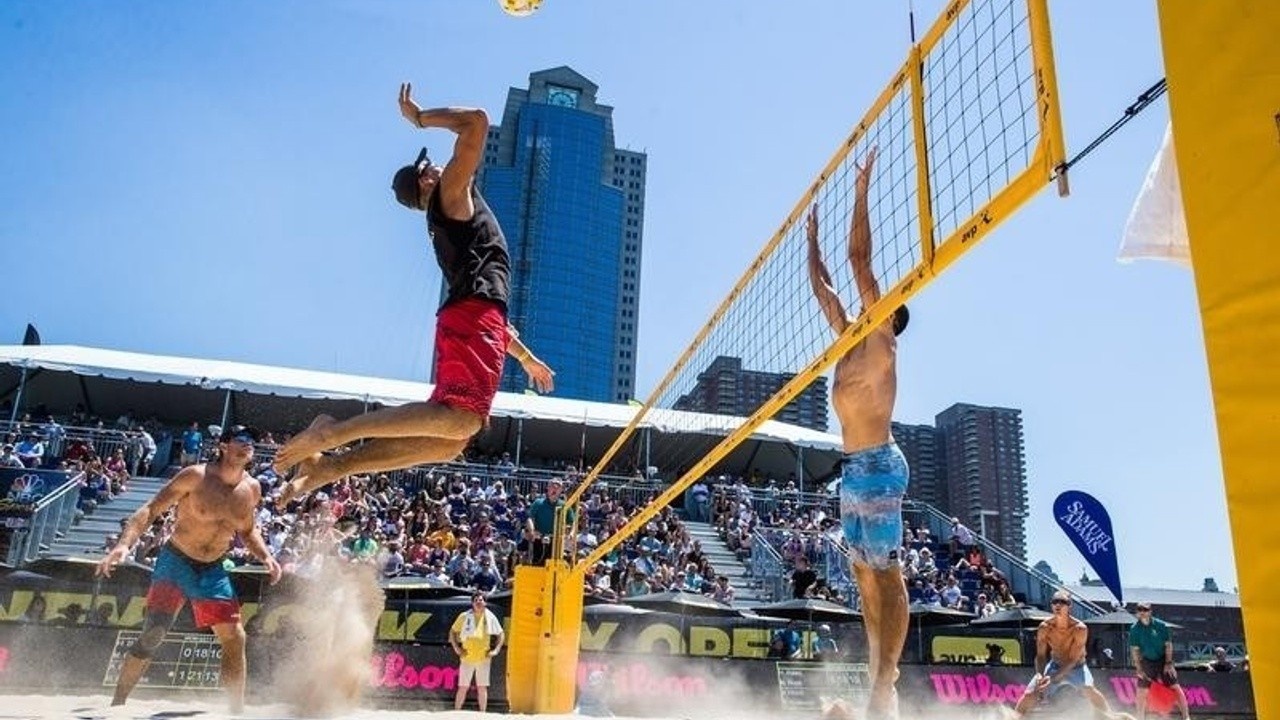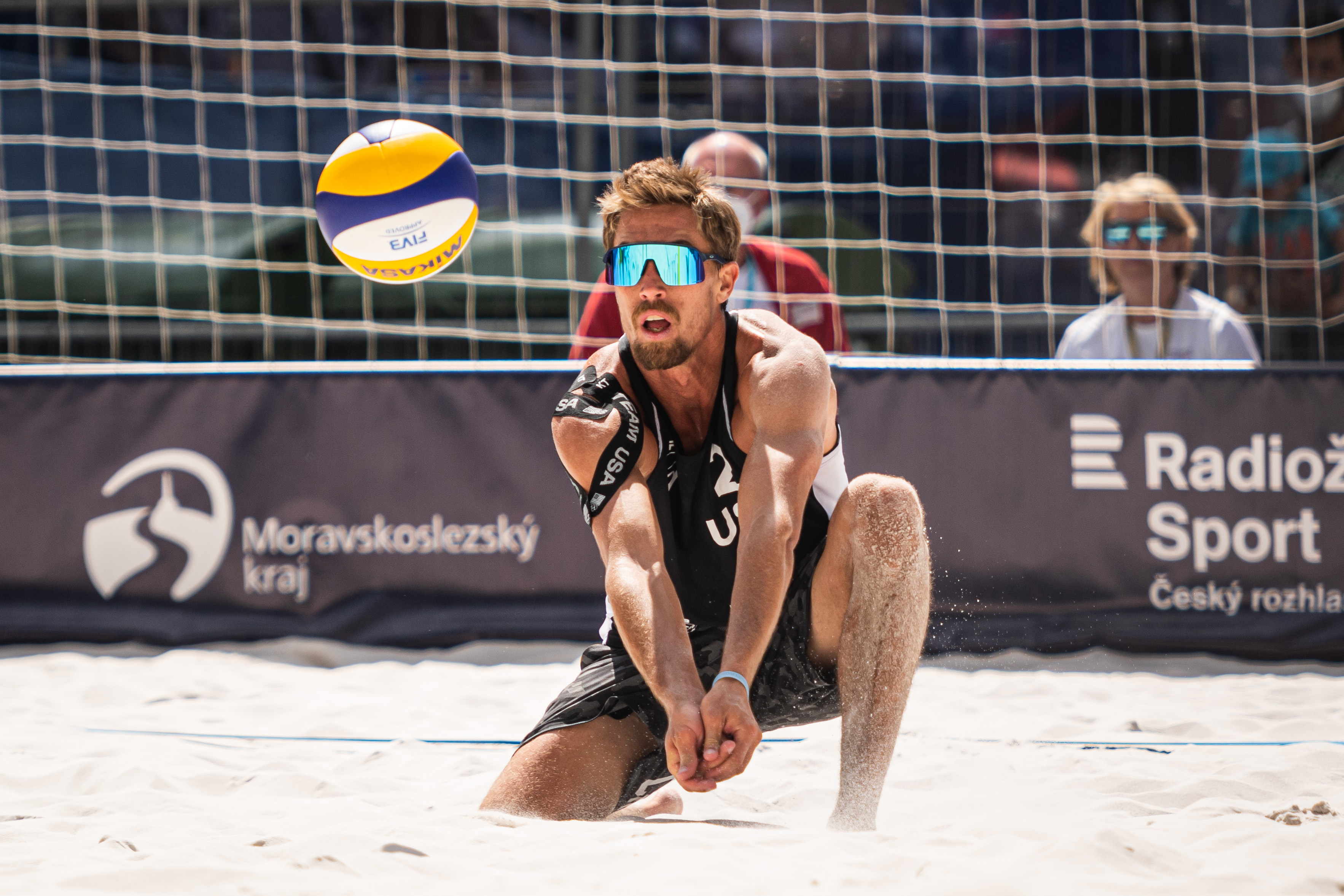
How to Jump Higher for Volleyball
JUMP HIGHER IN VOLLEYBALL
10 COMMANDMENTS FOR THE ULTIMATE VERTICAL JUMP
An explosive, impressive vertical is one of the most coveted – if not the most coveted – physical skills in all of sport. It’s the reason we marvel at NBA players such as Blake Griffin, and ‘ohh’ and ‘ahh’ at the absurd bounces of volleyball players like Troy Field.
It’s why there’s an entire dunk contest that gets viewed by millions every year, and why we prize a thunderous swing in volleyball or dunk in basketball far more than a simple layup or line shot – despite them being worth the exact same amount of points.
There’s just something about jumping high that we love. And for good reason. In volleyball, jumping higher will allow you to tap into an entirely new dimension of your game. It’ll give you offensive angles you’ve never had before, allowing you to side out at a higher rate. It’ll make you a bigger presence at the net, making it more difficult for an opponent to hit a high line over you or get a swing around you. It’ll impact virtually every aspect of your game.
Yet the question remains: How can I increase my vertical in volleyball?
It’s a common one, searched by thousands upon thousands on Google every year. And there are a lot of answers out there – most of which are not great answers. Perhaps you’ve done your own research, cobbling together a workout program. Or, perhaps you’re like thousands of volleyball players out there, and you’re a little lost as to how to increase your vertical.
Don’t worry. It’s not just you.
“You have to be tired of going from strength training workout to strength training workout without any real direction,” AVP professional beach volleyball player Mark Burik said. “You don’t have the numbers, you don’t have an exact idea of what you want to do. Maybe you’re going off an app and know you want to do some box jumps, bodyweight squats, lunges, watch your heart rate, or learn the proper squat positions for these movements but you don’t know exactly why and where each exercise fits in to making you win that tournament, making you win that match, helping you get a better partner.
We’re here to help you with that. We’re here to help you increase your vertical so you can jump higher in volleyball. We’re here to help you win more matches, hit those big swings you’ve always wanted, get picked up by the best partners.
We’re here to give you the 10 Commandments of the Vertical Jump.
1. Assessment: Know yourself, so you can grow yourself
Before we get into the reps and sets and any actual lifting and workouts, we must begin with an assessment.
“Knowing what type of jumper you are, knowing where you are, is huge,” Burik said. “If you’re in a program, and it doesn’t start you off with a movement assessment, telling you where you’re mobile, telling you where you’re tight, telling you what type of jumper you are – maybe we could imagine we’re tight in certain areas, but we don’t know.”
If you’re sick, for example, you’d tell your doctor your symptoms. He or she would then diagnose you with a specific medicine and specific activities you should do and avoid. That’s assessment.
Increasing your vertical jump for volleyball is no different. We must first assess, to understand, as Burik said, “what type of jumper you are.”
As part of that assessment, we must understand the Second Commandment of the Vertical Jump: What Metrics are important for you to know, and how to improve.
2. Metrics: What they are, and why you need them
In volleyball, there are a number of different types of jumps. There is our approach jump, which we use mostly in serve receive and transition when we’re attacking. There’s a block jump, in which we do not have the luxury of an approach to build up speed and explosiveness. There’s also a broad jump, measuring how far we can jump.
Before we begin our program to increase our vertical in volleyball, we must first measure all of these jumps, so we can get an accurate assessment – the First Commandment – of what type of jumper we are, and how much we are improving as we go.
In the weight room, we will test our one-rep max for both the back squat and deadlift, two of the most crucial lifts to increase your vertical in volleyball.
And, finally, we will measure our speed and agility. To do this, put two cones roughly 15 feet apart. After hitting your stopwatch, time how long it takes, using only shuffle footwork, to touch each cone 10 times.
Now that we have our metrics, and are properly assessed, we can move on to Commandment Three.
3. Balance: The key to longevity in volleyball
You might feel balanced. You might feel as if both of your legs are doing an equal amount of work. You might feel as if your strength and explosiveness are perfectly balanced. This is unlikely, especially in a sport such as volleyball, where hundreds upon thousands of movements require the use of muscles both big and small.
“So many people have muscles that are inhibited, who haven’t had a program that allowed them to get balanced,” Burik said. “If one of your hips is working harder than the other, it’s going to lead to injury.
“If every time you need to jump or move athletically and you’re also kind of falling, you’re not going to be able to use all your power, you’re not going to be able to use your maximal jump, it’s going to dissipate all your energy.”
Have you heard of the term “jumpers knee”? Chances are, you have, and there’s a reason it’s not called “jumpers knees.” It’s singular: Only one knee is particularly inflamed to the point of getting a diagnosis. Why is this?
Imbalance.
One leg is doing more work than the other. This could be due to anything from ankle mobility to hip mobility to lower back mobility to an imbalance in our strength. In order to reduce our risk of injury, we must ensure that we train in a balanced manner, keeping our weight distribution equal throughout our kinetic chain.
How can we ensure this?
In a word: Mobility.
4. Mobility: Athleticism and strength in every position
“In order to be athletic, you have to be mobile. Some people call this flexibility, but we call it mobility,” Burik said. “Can you be athletic and strong in a lot of different positions?”
Static stretching is a tremendous test of flexibility, and has its value. But how often are we going to be simply sitting down, stretching our hamstrings on a volleyball court? Not often.
How often are we going to be in a deep lunge, reaching for a ball, before popping up to hit it immediately after?
Almost every play.
That’s the difference between flexibility and mobility.
“Imagine how much better you could be if you could get into a deep squat or a deep lunge and pass in between your legs and under your knees and all those awkward positions we get into in sport and in volleyball,” Burik said. “We need to be able to get into those awkward positions and still be strong and efficient.”
Mobility is the Fourth Commandment of the Vertical Jump -- these stretches and exercises will teach you how to become more mobile -- but it might be the first commandment of how to become an excellent volleyball player. Mobility will not only help us jump higher, but it’ll help us swing harder, allowing us to rotate our chest and spine as we go to hit the ball. Mobility is what will keep you injury free, allowing you to play an entire season without injury.
Especially when that mobility is combined with the Fifth Commandment of the Vertical Jump: Core.
5. Core: It's not just for good-looking abs
The definition for your core is a vague one. Most, when thinking of core, imagine six-pack abs and a rippling lower back. This isn’t wrong; just limited.
“Your core,” Burik explained, “is everything underneath your chest all the way to your thighs.”
Rather than imagine your core as an enormous group of muscles, perhaps it will help to think of its purpose: Stability. We use our core in literally everything we do: walking, talking, shuffling through the checkout line at Trader Joe’s, jumping to hit a ball, changing direction to dig a high line -- as we show in the video below -- spiking a volleyball, literally everything.
It’s what keeps our body stable, able to make explosive movements, or any movements at all, really.
“When I was taking off for digs, when I was running, I noticed that my body had this lag that I didn’t want it to have,” Burik said of his years as a professional beach volleyball player when he had a weaker core. “I would lead and my chest would get left behind and then it would catch up. Now my legs are trying to pull my chest instead of driving my chest. Your legs are better at pushing than they are pulling. I was slow. As soon as I started embracing core work, then I finally felt fast. You can learn to be fast. This is one of the things that was holding me back from getting so many digs. I am always in the top three on the AVP in digs. Always. A big part of that is core.”
6. Glute activation: We can't jump high if our butt's asleep
If you have been to an AVP beach volleyball tournament, or have watched a professional beach volleyball player in any capacity, you will no doubt have seen a version of the same warm up routine from all of them: They’ll put bands around their legs and begin to do small movements.
There’s a reason 99 percent of beach volleyball players do this: Those bands activate the glute muscles.
Those glute muscles are the keys to unlocking your vertical jump.
“Certain muscles can be inhibited. They fall asleep,” Burik said. “Other muscles override them. Your glute muscles should be the strongest in your body, and are absolutely imperative to strength and speed. Making sure our glutes know when it was time to fire is crucial. Glute activation tells your glutes it’s time to fire.”
You know what doesn’t tell your glutes it’s time to fire? Sitting. You know what we do all day, every day?
Sit.
Having a thorough warm-up routine that gets your glute muscles activated and firing is a critical commandment of the vertical jump. We can’t expect to increase our vertical in volleyball if the biggest muscle isn’t firing.
And, for that matter, we can’t expect to increase our vertical in volleyball if we’re not doing arguably the most important activity: Jumping!
7. Jump jump jump...to improve your vertical jump
The human body and brain is a remarkable thing. It truly is. We can program it to do virtually anything we want: Run a marathon? Sure. Swim 10 miles? Why not? Lift an obscene amount of weight? Absolutely.
We can only do these impressive feats, however, if we tell our body what we’re doing, and how to do it.
“This is crucial,” Burik said. “How are you going to jump higher if you don’t tell your body what to do? You need to jump on a regular basis.”
Which is why the Seventh Commandment of the Vertical Jump is, simply: Jump, jump, jump.
But jump the right way.
“Does a jump roper have a high vertical jump? They can. But normally they don’t,” Burik said. “They’ve trained themselves to jump two inches. Your body is awesome. It will build the muscles and pathways you tell it to. So if you’re not jumping on at least three of your workouts per week, you’re not going to be able to jump higher, period.”
You must jump high. You must jump explosively. You must jump like you would in a match.
You must jump, jump, jump.
8. Max strength: The building block of the vertical leap
Have you ever watched Sean Rosenthal play volleyball? If you’ve been a fan of the sport for any of the previous 20 years, then you’ve seen Superman fly. As you’ve watched him bounce the Vegas Line, or soar over some of the biggest blocks in the world, have you noticed the dude’s quads?
They’re huge!
And incredibly, almost indescribably, strong. It’s by no accident that Rosenthal is one of the most impressive leapers of the previous two decades; he has some of the strongest legs you’ll ever see. His legs have virtually maxed out their strength, the Eighth Commandment of the Vertical Jump.
“This is huge,” Burik said. “Your ability to move with force and move your body well will get you skying. If you’re not scheduling sets with high weights for yourself, you won’t be able to maximize whatever you got. You have to develop max strength.”
There is a simple formula to develop the maximal strength needed to increase your vertical for volleyball. Your workouts should be done in three to six sets, between one and six repetitions each. These sets should be done using 80-95 percent of your one-rep max, which we measured with the Second Commandment of the Vertical Jump.
As we build our maximum strength, we’ll simultaneously be improving upon the Ninth Commandment of the Vertical Jump: Speed.
9. Speed: To jump high, you must jump fast
There is little that’s complicated about this commandment. It’s as simple as it gets:
“If you can move a bunch of weight, and you can move it as fast as possible, guess what?” Burik said. “All that energy is going into the ground and it’s taking off. Once you’re able to generate fast speed, all of a sudden, yes, we’re rocking.”
Equally important to how much weight we’re lifting is how fast we’re able to lift it. If we can deadlift 500 pounds, that’s great – but if it takes us 20 seconds to get all that weight up, it’s not doing us much good. Remember: Our brains are smart. If we’re teaching it to lift and move slow, we’re going to move slow. If we’re teaching it to move heavy weights fast, we’re going to be able to move fast.
We’re going to be chasing down high lines and skying over the blockers with no issue. The deadliest combination to increase your vertical in volleyball is max strength and max speed.
But all of this – the assessing and measuring, building strength and speed, developing core and mobility – would all be entirely useless without the Tenth Commandment of the Vertical Jump: Recovery.
10. Recovery: The secret to increasing your vertical
Do you know what’s happening while you’re working out? You’re actually tearing your muscles in microscopic ways. You’re breaking your body down, and every time it recovers, it recovers incrementally stronger, so it’s more difficult to break down the next time. Which is why we have to increase our weights to continually break those muscles down.
But if we’re not giving our body time to recover, our muscles are simply breaking down more and more, which leads to injury, burnout, and frustration. Recovery is imperative, in everything we do. There’s a reason that texts as old as the Bible call for an entire day of rest. Even God took a day off, folks.
So can you.
If it helps, look at your rest days as work. You must rest, or you’re actually moving backwards, getting further from your goal to increase your vertical in volleyball. Put in the work in the gym, then put in the rest that will make it all worth it.
11. So what's the next step? Where can you find a great program?












